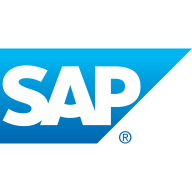


Find out what your peers are saying about SAP, Microsoft, Infor and others in ERP.
| Product | Market Share (%) |
|---|---|
| SAP ERP | 17.2% |
| Oracle E-Business Suite | 5.1% |
| Microsoft Dynamics SL | 0.5% |
| Other | 77.2% |



| Company Size | Count |
|---|---|
| Small Business | 43 |
| Midsize Enterprise | 33 |
| Large Enterprise | 112 |
| Company Size | Count |
|---|---|
| Small Business | 31 |
| Midsize Enterprise | 30 |
| Large Enterprise | 76 |
Oracle E-Business Suite (EBS) is considered the most extensive offering of amalgamated worldwide business applications available. Oracle EBS helps facilitate medium to large business enterprise organizations with the ability to enhance critical decision-making processes, streamline business procedures, minimize costs, and improve overall performance and productivity.
Oracle EBS runs as a complement to Oracle Database software. The applications serve to automate such processes as supply chain management (SCM), human resource management (HRM), customer relations management (CRM), project portfolio management (PPM), financial management, service management, and more.
Oracle EBS runs best in the cloud. It is a cost-saving option that offers greater productivity and can immediately and easily respond to changing dynamic business needs with an intuitive, automated scalable cloud infrastructure.
Below are some of the valuable features of popular application offerings available within Oracle EBS:
Supply Chain Management (SCM): Every possible supply chain process can be fully automated, from planning, creation, and appropriation to development and fulfillment, delivering a comprehensive solution application to ensure organizations have robust, intelligent-driven, value-added chains. Some applications include:
Human Resource Management (HRM): The solution offers a sturdy group of outstanding human resource processes that enable users to improve productivity, enhance overall business performance, and lower TCO. Some processes include:
Customer Relations Management (CRM): This application provides for a streamlined, unique global gathering of information that will ensure all selling channels are continually following the organization's objectives and protocols. Some features include:
Project Portfolio Management (PPM): Oracle EBS provides a comprehensive, full lifecycle offering of project and portfolio management. Users get a single fully transparent view of all project-related ventures coupled with a superb performance process that grants users the ability to choose the best, most dynamic portfolio ventures.
Financial Management: Users are able to perform more effectively, improve productivity and efficiency, develop productivity tools and integrated performance management, and develop processes for shared services to reduce overall operating costs. Some features include:
Service Management: This application allows users access to the best data necessary to provide correct, precise, reliable information to their clients to ensure that every expectation is exceeded and consistently satisfied.
Reviews from Real Users:
Kopano R., Freelancer at a tech services company, says, “What I found most valuable in Oracle E-Business Suite is the patching because it is straightforward. As long as you follow Oracle's best practices, you are able to finish the task of patching without a problem. I like that it's also easy to add products, e.g. if you want to add on financials, you can, or if you don't have financials, you can expand on that. I like that Oracle E-Business Suite is really scalable.”
Mohammed G., Senior Oracle Application Consultant at a comms service provider, writes, “Oracle E-Business Suite consists of a lot of streams, such as financial and HR processes of the enterprise companies. We are using most of the Oracle financial modules, and we have an Oracle stream, FI procurement stream, and HR streams, which have a lot of applications. Oracle E-Business Suite has over 20 different modules to choose from, it is comprehensive. Additionally, the integration is very good. “